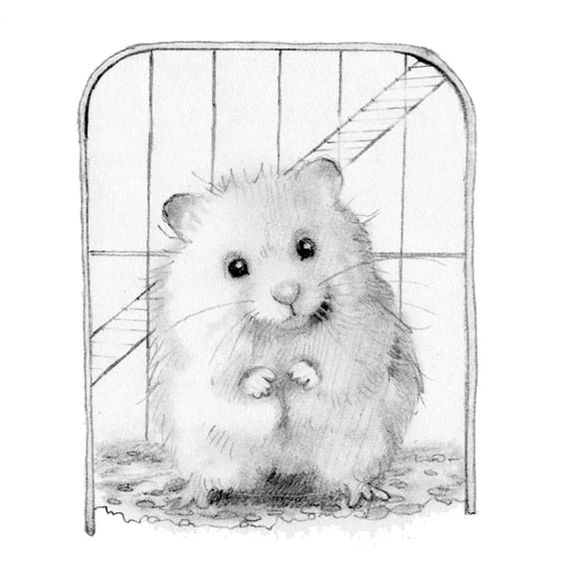“I’m about as creative as a caged hamster.”
– My friend who thinks he’s not creative.
How creative is a caged hamster? We won’t know until the hamster lets himself out of the cage to find out. (Comparing yourself to a caged hamster, however, is quite imaginative.)
Should my “caged hamster” friend take H-IQ?
Many people posit—before they even try H-IQ—that they will “fail” or “do poorly.” They make comments like:
- “I dread to find out how uncreative I am.”
- “I’ve never been very imaginative.”
- Or, “I’m about as creative as caged hamster.”
People shy away out of a fear of an imagined failure, or of a diagnosis of some creative deficiency. (Right off the bat, these self-described “non-creative” people are using their imaginations to predict an outcome.)
“I’m not creative” is a myth believed by too many. We are wrongly convinced that creativity lands like pixie dust on the gifted “geniuses” of the world. We don’t recognize the strength and individuality of our imaginations.
For example, one of the cages we construct around our imaginations is the Golden Gate Bridge syndrome. We admire great bridges like the Golden Gate or the Brooklyn Bridge. But, none of our ideas seem to have the same grandeur. It’s easy to despair that you may never have a “Golden Gate Bridge” idea. But ideas are like bridges: we need them everywhere. We need the Golden Gate Bridge, but we also need the log bridge over the crick.
Every person is born with imagination: the ability to draw upon previous experiences to engage in mental simulation, in order to achieve future goals. It is the ability to predict outcomes: if I do this, I can achieve that.
Ask yourself: do you rely on memory in weighing your next course of action? Do you envision a result and decide whether to pursue it? Yes, of course, you do. Everyone does. That’s imagination.
You use your imagination all day, every day: “I think I’ll have pastrami on rye for lunch,” “Maybe I should play a round of golf,” “I wonder what it would be like to drive that car.”
Then, why do people say that they are not creative?
First, imagination and creativity are different. Imagination is the internal source of every idea whether it’s what to eat for lunch or how to revolutionize the computer industry. Imagination precedes creativity. Creativity is the external recognition of value, veracity, utility and originality of an idea. You may believe in the consummate value of your idea, but only others can determine if the idea is original, valuable, true or useful.
Imagination runs continuously in your mind. Creativity requires external context.
For example, suppose you came up with an idea to create a machine that communicates over miles of copper wire using a tapping code. This may be a brilliant idea, but it’s not creative because a telegraph is no longer original.
In the late 19th century, the notebooks of Leonardo Da Vinci were rediscovered after being missing for four centuries. Today, we marvel at the sketches drawn in the late 15th century of what we consider bold ideas, including the helical air screw (helicopter) and a manned flying contraption. However, neither idea ever left his drawing board. No prototypes were ever built, even though so many of his military inventions saw the light of day.
Why? Perhaps because the Duke of Florence and other patrons didn’t see the value. In the context of the 15th century, the helical air screw was imaginative, but not deemed creative.
However, the people of the late 19th century were impressed by Da Vinci’s ideas. In part because manned flight was beginning to seem possible. The first steerable hot-air balloon went up in France in 1852. Other inventors tested gliders, helicopters (named in Paris in the 1860s) and fixed-wing devices, and their efforts often made international news.
It was assumed (and debated) that someone would soon become the first human to fly in the early 20th century: there were competing teams of inventors in France, Germany and the United States. The Wright Brothers were recognized as creative because the world was already convinced of the value and originality. The honor would go to the first to succeed at flying.
Da Vinci’s ideas had to wait four centuries to be recognized as creative. Although, his first designs, while imaginative, are flawed. Contemporary replicas of his drawings cannot fly. Still, Da Vinci’s notebooks are crammed with notes, illustrations, ideas, sketches and studies. He used the notebooks to uncage his hamster.
H-IQ offers a similar platform: a tool for noting, preserving and evaluating your ideas for future review. H-IQ does not measure potential, it measures how engaged you are with your current crop of ideas. It activates your imagination. It does not issue a diagnosis. It does not compare you to external standards. (How can there be external standards for imagination?) All that matters is how engaged you are with your ideas. Only you can evaluate how well your ideas serve your goals. Ignore the cages that keep you stuck.
So, you should take H-IQ, especially if you feel like a caged hamster. Generate ideas to cross the cricks of your life. Bridging cricks leads to bridging streams, rivers and oceans. Let your hamster free to dance on a bridge.
And I will go on to live a life of mixed metaphors.





